Today’s convenience shopper is on a mission. Three actually: a quick top-up shop; picking a meal for that night; and grabbing some food to eat on the go. And the convenience store retailers that help them complete those missions are sitting on a £1.5bn sales bonanza, according to Kerry Foods.
The sticking point is that for the average c-store, offering chilled food presents a host of new challenges.
“Chilled food has far more complexities than the ranges a typical c-store has grown up with,” says Claire Bocking, who became Kerry Foods’ first sales director for the convenience channel in February 2014.
“If you over-order on alcohol you can always sell it eventually. Chilled is an unforgiving category.”
Nisa fresh and frozen business manager John White says “lack of space” in a typical c-store is also a “traditional barrier” to going big on chilled. However, c-stores can make it work by offering the “right chilled products at the right price, to make sure you are turning products. You want the right pack form and pack size so you are only putting in stock what will turn within its life. You need to make sure you have maximum code on the product going into store and that you are receiving deliveries frequently, and on time.”
Get all that right, White adds, and a well-executed mission-based chilled range offers “massive potential” for c-store owners who are up for the challenge.
How much? For convenience store retailers that embrace the mission-based mindset, White believes Kerry’s estimates of an extra £1.5bn in incremental sales in only three years is not unreasonable.

Dramatic increase
Even if you take the forecasts with a pinch of salt, Bocking argues independents who don’t adapt to the missions of today’s convenience shoppers are at risk of being left behind by those that do. And the major multiples wouldn’t consider doing it any other way.
“When a convenience store gets converted by a multiple, or when M&S take over a forecourt, the amount of space given to chilled ranges is dramatically increased,” she says.
That’s why symbol groups like Nisa, and wholesalers more generally, have invested so much money in their chilled supply chains: to help c-stores compete.
“Chilled is the number one priority when you speak with them,” says Docking. “Being professional in chilled is uppermost, from how they manage their depot cold rooms to how they operate their logistics operation for retailers.”
Bestway is no exception. “Whether it’s food to go, food for tonight or gearing up for a barbecue, we think within five years, 40% of a c-store’s takings will be from chilled,” says Bestway symbol director James Hall. “That’s how important it is. Right now a good chilled offer should be as big as beer and lager because that is what the consumer wants.”
Backing up its hunch, Bestway has boosted its chilled range to “over 700 chilled lines” and has also drawn up retailer planograms for anywhere between 1.5-metre to nine-metre chilled fixtures.
“Retailers need to allocate space and plan the fixture accordingly. About 20% of store space should be dedicated to fresh and chilled with an emphasis on products that satisfy shoppers at that moment and for the next 24 hours, like fresh pizza, salads, fresh chicken and burgers.
“Then retailers need to signpost the category by creating multibuys, like pizza and beer or running offers on complementary products such as chicken, wraps, salsa and wine. It does take greater effort, but the sales and margins are there if you get it right.”
Own label
Although branded suppliers such as Kerry and Samworth Brothers have grown sales on the back of such investments, Nisa’s White believes own label is key within chilled. Last June it re-launched its Heritage own-label range. White says speeding the chilled products out to market was the priority.
“Top-up shop is a big area for growth. We overtrade in it at Nisa, and chilled dominates top-up,” he says. Chilled also features heavily within meal for tonight, which is “another huge area of growth”. Plus shoppers spend more time in store if there is a strong chilled offer, “which means more browsing time, which leads to broader spend,” White adds.
“A number of our retailers see our own-label Heritage range as a point of difference, so we have introduced tiers into our range to give distinction and hierarchy and give stronger margin to retailers and better value to consumers. Put that all together and you’ve got the reason why we have got behind chilled as a lead category.”
Erin May, Heritage brand manager, says that since the re-launch the brand has been flying.
“Members love it. We see more and more buying it every week. Ready meals are up 34%, the bestselling SKU is a chicken tikka ready meal. Cooked meat is up 30%, eggs are up 27%, sausages up 42%. Not one category is in decline, so we are continuing to roll it out, we are increasing the product range, and we have new products still to come. We need to remain competitive. If the multiples are bringing in NPD, then we will too.”
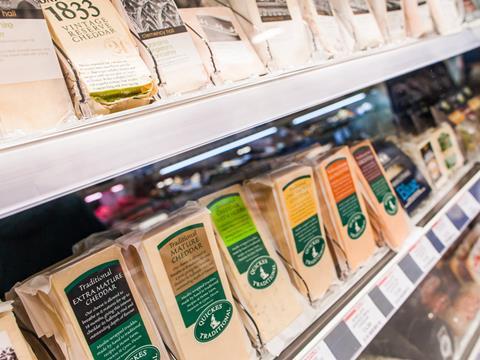
Smarter not harder
Award-winning retailers Pinda and Paul Cheema are certainly embracing the new shopper missions. Switching from Costcutter to Nisa last October they re-opened their Coventry store last weekend, radically changing the layout to a new design focused around meeting shopper missions.
“We have always done a lot of chilled but now we have a whole chiller at the front of the store just for meal for tonight solutions,” says Pinda Cheema.
“At the moment we are doing two large Cobra and two curries for £10. We haven’t so much increased the chilled range as put solutions together. So we have bacon, sausages, eggs, tomato and mushrooms all together. We have chicken, chops and red meat, and above that you’ve got fajita and enchilada kits and jalapeños, and above that we have bottles of Desperados and Corona. We always had slices of chicken breast, but now they are next to beansprouts and the small stir fry Blue Dragon sauces. With the steaks we will have the peppercorn sauce, flat mushrooms and tomatoes next to them. We’ve put the whole solution together whereas before we might have had meat on one side and cooking sauces on the other. It’s not so much about working harder but working smarter.”
Chilled is “massive now” he adds. “Without chilled, you don’t sell anything else in the shop. Costcutter’s chilled selection was poor and our store sales were massively affected. Nisa has a more comprehensive range of chilled. We’ve got four metres of Heritage ready meals now, we’ve got snack stuff for lunches. We have done it differently to how a store is traditionally laid out, but we did a lot of work with Him! for advice on how we should do it and geared everything towards missions. You can extend chilled space and put 50 new lines in but that isn’t what the customer wants. They want you to make it easy for them.”
Quality
At the same time, they have upped the quality of the chilled produce on offer. “We have five metres of cooked meat now, including two metres of Continental because customers are used to buying that from Aldi and if we were going to spend money on chilled we needed to be hitting the competition, which we have done. Plus we do pork chops, pork belly, ham carved off the bone, we get T-bone steaks from a producer with his own farm. We have a picture of the farmer saying ‘I reared it, I slaughtered it, I packed it, I brought it to you’. And you can’t get better than that. Customers love it. They are filling their basket in the chilled aisle before even going around the rest of the shop.”
Londis retailer Ramesh Shingadia, who has run a 2,600 sq ft Londis in West Sussex for 32 years, nearly doubled chiller capacity from 7m to 13m after extending and refitting his store last year based on the shopper-based missions approach.
“Initially the challenge was managing waste, but we have got it under control,” he says. “It’s a trial and error situation because we put in a lot of new lines. So we monitored where the wastage was coming from and those that didn’t move got delisted. Eighty per cent of the range will be fine, it’s the other 20% you need to work on, and if it doesn’t work, try something new.
Most retailers will find the first three months are the worst. You have a lot of new products, you don’t know what is going to work and you are going by a lot of recommendations. I’m still learning. But we have had a lot of good advice and we want to take it. And the rewards are there.”
Shingadia says going from 7m to 13m of chilled has translated into 70% growth in chilled sales, but says the move has had a “fantastic halo effect elsewhere. Basket spend has gone up from £6 to £8 for those now buying chilled. And it makes a great statement for the store. People’s perception of the store has improved because chilled and fresh food looks great. It gives the whole store a lift.”
When it came to the store redesign he says they did “a lot of work alongside Londis, Kerry and Unilever on current trends. It’s breakfast, it’s lunchtime meal deals. And the meal for tonight is the biggest growth category. Customers haven’t decided what they want, they want inspiration and it’s about us providing them with a solution. That is where the market is going.”
Hot food to go
Once convenience has nailed food for tonight, Bocking believes food to go will become the one to watch. It’s already being executed brilliantly by Eat 17, which has two Spar stores in Hackney and Walthamstow. Its food to go offer has won rave reviews from some of the top food critics in the UK, including Grace Dent at the Evening Standard, who described its buttermilk fried chicken burger as “London’s finest”.
And as the Him! CTP research for 2015 points out, across the sector, dated news stands stuffed with magazines are already shrinking to accommodate quality coffee machines from the likes of Costa and Nescafé, and a widening range of hot snacking options. Bocking believes taking that offer forward is where the next leap of convenience growth will come from.
“Convenience stores are very often in just the right place for a food to go solution,” she says. “Plus there is a great deal of innovation going on in quick, hot, food to go. The line where retail finishes and where food service starts is already well and truly blurred. And it’s only going to get blurrier.”
Forecasting in food to go
“We know convenience is already expanding rapidly, but expanding their chilled range to include the same products you might find in a larger store makes them much easier for a consumer to choose to shop in,” says Rakesh Harji, MD of forecast software company Blue Yonder. “And for that, forecasting becomes a necessity.”
That’s because chilled and fresh ranges “need more decision-making as they have a limited life,” he adds. “Ordering the right quantity is vital because if you are not doing that you will inevitably incur waste. So automating those decisions makes sense. Otherwise you are using gut feel. And a retailer might think they know what is likely to happen, but we can make a decision with far greater accuracy than a human can ever do.”
The ongoing encroachment of the multiples into convenience gives indies all the more reason to have the same weapons as them, argues Harji.
“If they don’t then the supermarkets will have more intelligence at their disposal. And although forecasting has always been seen as expensive, cloud-based technology has made it far more accessible because effectively it means no upfront capital investment, just software subscriptions. That makes implementation faster, so time to market becomes quicker, and getting everything up and running becomes less intrusive.”
Food to go outlet Eat, which has 114 stores in the UK serving up coffee, pies, sandwiches, soup and salads, says it saw a 14% reduction in chilled waste after rolling out forecasting for the first time earlier this year.
“Predicting demand for one-day shelf products is a real challenge,” says Eat CFO Strahan Wilson. “Forecasting helped us effectively maintain product availability up to specified sell-out times, whilst significantly reducing waste so that we can achieve an optimal balance between out-of-stock and over-stock situations.”
Ultimately, Harji says forecasting allows a retailer to know “precisely who will come into the store and what they are likely to buy. That helps retailers optimise how they fill their store and helps them serve their customers with the products they need. And if they can do that early on they can reduce out of stocks, writedowns and chilled wastage.”
Stateside: taking convenience to a whole new level
In New York City it’s rare to come across a c-store without a quality food to go offer. Sunac Natural Market (left) devotes expensive square footage in the heart of its eight NYC stores in Manhattan and Brooklyn to a wide variety of fresh, chilled and hot food, bridging the gap between a convenience store and a food to go outlet by offering customers everything from kitchen roll to a steaming bowl of ramen. “Bogadas have been part of the New York City experience for decades,” says Jeff Lenard, VP of strategic industry intiatives at the US National Association of Convenience Stores. “These are largely small grocery stores tucked away on virtually every block that has some sort of buffet offer.” However, several convenience chains have started upping the ante, including Bolla Market, which recently adopted the tagline ‘Taking convenience to a whole new level’ after it upgraded its organic coffee and food to go offer in 21 stores dotted across NYC. “Every study we do shows that consumers want more fresh food in convenience stores,” adds Lenard. “It’s a trend led by millennials who shop our stores more than any other group, and they want snacking as much as meals.”
However, Lenard warns UK stores to carefully manage spoilage. “That means removing bananas as soon as they begin to turn brown, for example. Even though they still taste great, it sends a visual cue that you may not care about freshness. And that has implications for all of your other merchandise.”
The number of c-stores in the US hit a record 152,794 in 2014, a 1% increase on 2013. The majority (63%) are owned by single store operators.
Source
James Halliwell




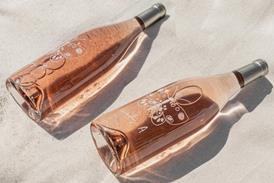


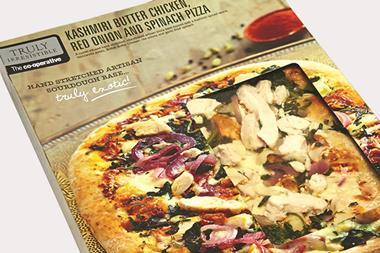
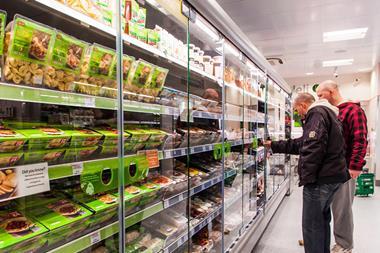



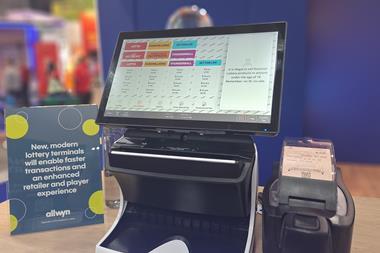





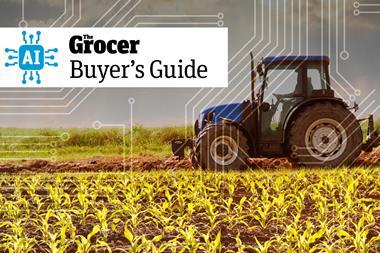
No comments yet